
A kilt is a garment resembling a wrap-around knee-length skirt, made of twill-woven worsted wool with heavy pleats at the sides and back and traditionally a tartan pattern. Originating in the Scottish Highland dress for men, it is first recorded in the 16th century as the great kilt, a full-length garment whose upper half could be worn as a cloak. The small kilt or modern kilt emerged in the 18th century, and is essentially the bottom half of the great kilt. Since the 19th century, it has become associated with the wider culture of Scotland, and more broadly with Gaelic or Celtic heritage.

A loom is a device used to weave cloth and tapestry. The basic purpose of any loom is to hold the warp threads under tension to facilitate the interweaving of the weft threads. The precise shape of the loom and its mechanics may vary, but the basic function is the same.
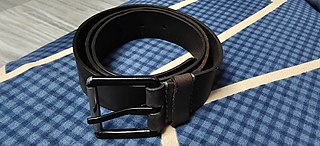
A belt is a flexible band or strap, typically made of leather, plastic, or heavy cloth, worn around the natural waist or near it. The ends of a belt are free; and a buckle forms the belt into a loop by securing one end to another part of the belt, at or near the other end. Often, the resulting loop is smaller than the hips. Belts come in many lengths because of the variety in waist sizes, and most belts can be adjusted at the buckle to suit the wearer's waist.

A drill is a tool used for making round holes or driving fasteners. It is fitted with a bit, either a drill or driver chuck. Hand-operated types are dramatically decreasing in popularity and cordless battery-powered ones proliferating due to increased efficiency and ease of use.

A button is a fastener that joins two pieces of fabric together by slipping through a loop or by sliding through a buttonhole.

A buckle or clasp is a device used for fastening two loose ends, with one end attached to it and the other held by a catch in a secure but adjustable manner. Often taken for granted, the invention of the buckle was indispensable in securing two ends before the invention of the zipper. The basic buckle frame comes in a variety of shapes and sizes depending on the intended use and fashion of the era. Buckles are as much in use today as they have been in the past: used for much more than just securing ones belt, instead they are one of the most dependable devices in securing a range of items.

A frog is a type of ornamental braiding closure made out of cord, consisting of a button and a loop; it is used to fasten garments without creating an overlap. Its purpose is to act as a fastener as well as providing a decorative closure for the garment. It is especially used on the cheongsam, where the frog represents the cultural essence of the dress.

The Boy Scouts of America (BSA) use uniforms and insignia to give a Scout visibility and create a level of identity within both the unit and the community. The uniform is used to promote equality while showing individual achievement. While all uniforms are similar in basic design, they do vary in color and detail to identify the different membership divisions of Cub Scouting, Scouts BSA and Venturing. Many people collect BSA insignia such as camporee and jamboree emblems, council shoulder strips and historical badges.
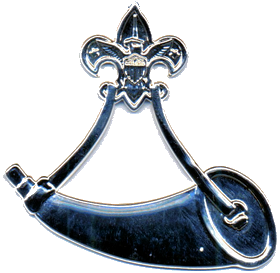
Powder Horn is a skills resource course for Venturing and Scouts BSA leaders and youth of the Boy Scouts of America (BSA). Powder Horn is also described as a "hands-on resource management course" designed to give Scouting leaders "the contacts and tools necessary to conduct an awesome high-adventure program" in their Scouting unit. The goals of Powder Horn are to help Scout leaders safely conduct outdoor activities of a fun and challenging nature, provide an introduction to the resources necessary to successfully lead youth through a program of high adventure, and familiarize participants with the skills involved in different high adventure disciplines. The Powder Horn course will also introduce Venturing leaders to the Ranger youth award program, so adults may better help Venturers in meeting the Ranger award requirements. Powder Horn presents a wide variety of hands-on high adventure skills experiences, and thus is not designed to provide specific skills certifications. The course is meant to be held over a one-week period or two three-day weekends. Youth attendees will get first-hand experience and information as well as resources so they can better act as Event Chairs for their units.
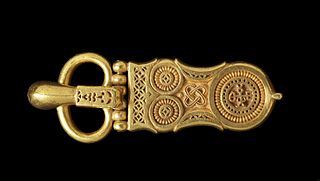
A belt buckle is a buckle, a clasp for fastening two ends, such as of straps or a belt, in which a device attached to one of the ends is fitted or coupled to the other. The word enters Middle English via Old French and the Latin buccula or "cheek-strap," as for a helmet. Belt buckles and other fixtures are used on a variety of belts, including cingula, baltea, baldrics and later waist-belts.
The United States Army in World War II used a variety of standard and non-standard dress and battle uniforms, which often changed depending upon the theater of war, climatic environment, and supply exigencies.
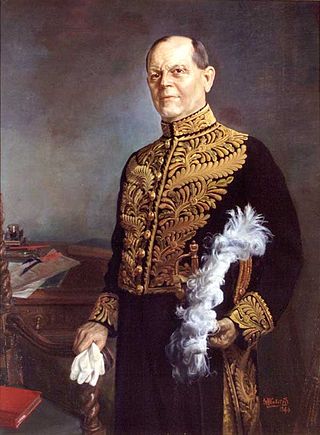
Court uniform and dress were required to be worn by those in attendance at the royal court in the 19th and early 20th centuries.

The modern, tailored kilt which is ubiquitous at Highland games gatherings around the world has associated with it an evolving style of wear. This style includes the accessories and other accoutrements which are typically worn with it. In this sense, it is very much like other items of the fashion world.

A police duty belt is a belt, typically constructed of nylon or leather used by police, prison and security officers to carry equipment easily in a series of pouches attached to the belt, in a readily-accessible manner, while leaving the hands free to interact. This belt can carry any number of useful items, ranging from handcuffs to guns.
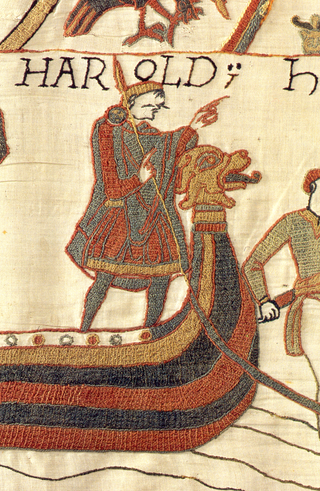
Anglo-Saxon dress refers to the clothing and accessories worn by the Anglo-Saxons from the middle of the second century to the eleventh century. Archaeological finds in Anglo-Saxon cemeteries have provided the best source of information on Anglo-Saxon costume. It is possible to reconstruct Anglo-Saxon dress using archaeological evidence combined with Anglo-Saxon and European art, writing and literature of the period. Archaeological finds have both supported and contradicted the characteristic Anglo-Saxon costume as illustrated and described by these contemporary sources.

A mini blind is a type of horizontal window blind made of long, narrow slats held together by string. Its slats are less than half the width of a regular venetian blind, and are often made of aluminium, measuring 15 millimetres (0.59 in) or 25 millimetres (0.98 in). The slats are opened and closed by rotating a rod or by directly pulling a string, and they are raised and lowered by pulling other strings.
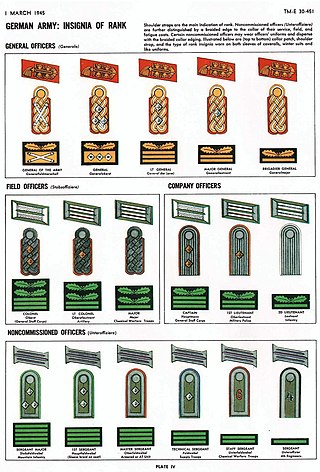
The Heer as the German army and part of the Wehrmacht inherited its uniforms and rank structure from the Reichsheer of the Weimar Republic (1921–1935). There were few alterations and adjustments made as the army grew from a limited peacetime defense force of 100,000 men to a war-fighting force of several million men.
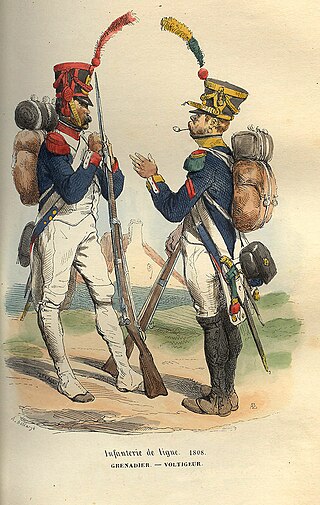
In military uniforms, a shoulder belt is a wide belt worn usually over the shoulder and across the body. With nearly all line infantry, skirmishers, light infantry, grenadiers and guard regiments, two shoulder belts were worn - one carrying the cartridge box, and another for the bayonet, a sword, or other military equipment.

A watch strap, watch band,watch bracelet or watch belt is a bracelet that straps a wrist watch onto the wrist. Watch straps may be made of leather, plastic, polyurethane, silicone, rubber, FKM, cloth, or metal, sometimes in combination. It can be regarded as a fashion item, serving both a utilitarian and decorative function. Some metal watch straps may be plated with, or even in rare cases made of, precious metals.

String is a long flexible structure made from fibers twisted together into a single strand, or from multiple such strands which are in turn twisted together. String is used to tie, bind, or hang other objects. It is also used as a material to make things, such as textiles, and in arts and crafts. String is a simple tool, and its use by humans is known to have been developed tens of thousands of years ago. In Mesoamerica, for example, string was invented some 20,000 to 30,000 years ago, and was made by twisting plant fibers together. String may also be a component in other tools, and in devices as diverse as weapons, musical instruments, and toys.




















